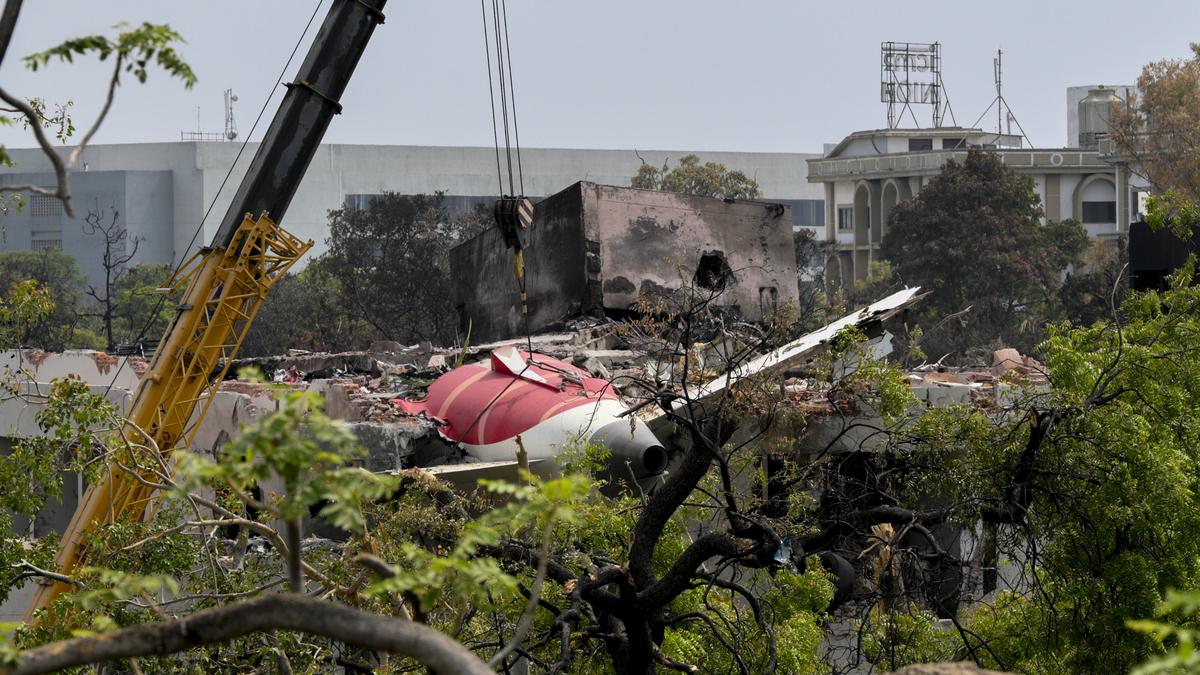 |
|
The recent Air India plane crash in Ahmedabad, resulting in a catastrophic loss of life, has understandably sparked widespread concern and a demand for swift and thorough answers. The preliminary report released by the Aircraft Accident Investigation Bureau (AAIB) provides a glimpse into the potential causes, but as Union Minister Murlidhar Mohol emphasized, drawing definitive conclusions at this stage would be premature. The minister's caution stems from the brevity of the cockpit voice recording, which leaves many critical questions unanswered. The focus now shifts to a more in-depth investigation to unravel the complex sequence of events that led to this devastating accident. The crash, involving a London-bound Boeing 787 Dreamliner, occurred shortly after takeoff and tragically impacted a medical college hostel, highlighting the potential for collateral damage in aviation incidents, particularly those occurring near populated areas. The AAIB's initial findings indicate a simultaneous cutoff of fuel supply to both engines, a highly unusual event that immediately triggered confusion and disorientation in the cockpit. The cockpit voice recording captures this moment of crisis, with one pilot questioning the other about the fuel cutoff, only to be met with a denial. This exchange, while tantalizing, is far from conclusive. It raises several possibilities, including a potential malfunction, human error, or even a deliberate act, all of which require careful examination. The Minister's assertion that the AAIB is an independent body, free from ministerial interference, is crucial for maintaining public trust in the investigation process. Transparency and objectivity are paramount to ensure that the true causes of the crash are identified and that appropriate measures are taken to prevent similar tragedies in the future. The accident underscores the inherent risks associated with air travel, even with the advanced safety measures and regulations in place. The investigation will need to consider all contributing factors, from the maintenance history of the aircraft to the training and experience of the flight crew. Furthermore, the role of air traffic control and the potential for external factors, such as weather conditions or bird strikes, must also be thoroughly investigated. The loss of life in this accident is a profound tragedy, and the families of the victims deserve to know the truth about what happened. The AAIB's final report will be a crucial document, providing a detailed account of the events leading up to the crash and offering recommendations for improving aviation safety standards. The international aviation community will be closely watching the investigation, as the findings could have significant implications for aircraft design, pilot training, and air traffic management procedures worldwide. The need for continuous improvement in aviation safety is undeniable, and this accident serves as a stark reminder of the potential consequences of complacency or negligence. The investigation must be conducted with the utmost diligence and professionalism to ensure that the lessons learned from this tragedy are fully applied to prevent future accidents and protect the lives of air travelers. The reliance on technology such as the black box and cockpit voice recorder is essential for understanding the final moments of flight and any distress or missteps in communication. This allows for improvements in communication protocols and training to better equip flight crews in the event of malfunctions or other problems during flight. The investigation also needs to delve into emergency protocols for these kinds of situations. What actions were taken to notify passengers and ground control? Were the flight crew able to follow emergency procedures? By looking closely at these elements of the crash, investigators can identify deficiencies in the flight crew response in order to improve training programs for pilots and other flight crew members. Furthermore, there needs to be an investigation into the possibility of mechanical failure. The fact that the fuel supply to both engines was cut off almost simultaneously indicates a strong possibility of mechanical failure in the airplane itself. This part of the investigation needs to thoroughly inspect the airplane's maintenance history and any previous reports of mechanical failures. The AAIB needs to leave no stone unturned in its investigation. Every detail must be explored to accurately identify the reason for this tragedy. The impact that the crash had on the nearby medical college also cannot be ignored. This brings into question safety standards for air fields located near populated areas. While the airport itself may be up to code, the surrounding land might not be. Moving forward, cities and airlines need to work together to ensure that airports are not located near heavily populated areas and that safety regulations are updated to prevent similar tragedies in the future. This crash has exposed several flaws in the flight industry. By identifying each of these flaws and acting to correct them, the flight industry can make significant strides toward ensuring safer travel for everyone.
Source: Air India crash report: Can’t draw conclusions, pilots’ conversation brief, says MoS Civil Aviation
